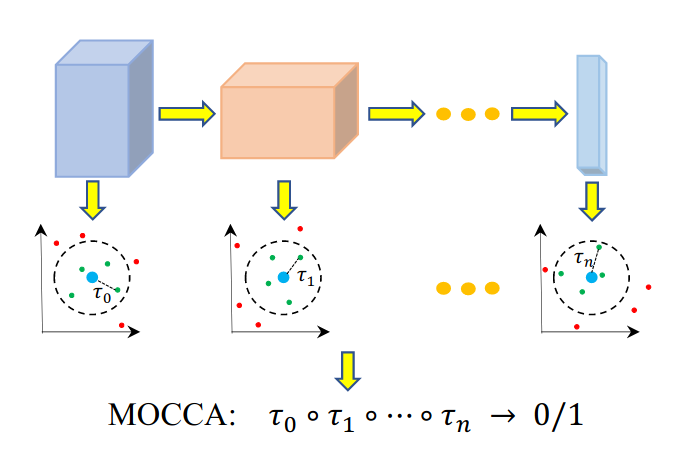MOCCA: Multi-Layer One-Class ClassificAtion for Anomaly Detection
Anomalies are ubiquitous in all scientific fields and can express an unexpected event due to incomplete knowledge about the data distribution or an unknown process that suddenly comes into play and distorts observations. Due to such events' rarity, to train deep learning models on the Anomaly Detection (AD) task, scientists only rely on "normal" data, i.e., non-anomalous samples. Thus, letting the neural network infer the distribution beneath the input data. In such a context, we propose a novel framework, named Multi-layer One-Class ClassificAtion (MOCCA),to train and test deep learning models on the AD task. Specifically, we applied it to autoencoders. A key novelty in our work stems from the explicit optimization of intermediate representations for the AD task. Indeed, differently from commonly used approaches that consider a neural network as a single computational block, i.e., using the output of the last layer only, MOCCA explicitly leverages the multi-layer structure of deep architectures. Each layer's feature space is optimized for AD during training, while in the test phase, the deep representations extracted from the trained layers are combined to detect anomalies. With MOCCA, we split the training process into two steps. First, the autoencoder is trained on the reconstruction task only. Then, we only retain the encoder tasked with minimizing the L_2 distance between the output representation and a reference point, the anomaly-free training data centroid, at each considered layer. Subsequently, we combine the deep features extracted at the various trained layers of the encoder model to detect anomalies at inference time. To assess the performance of the models trained with MOCCA, we conduct extensive experiments on publicly available datasets. We show that our proposed method reaches comparable or superior performance to state-of-the-art approaches available in the literature.
PDF AbstractDatasets
| Task | Dataset | Model | Metric Name | Metric Value | Global Rank | Benchmark |
|---|---|---|---|---|---|---|
| Anomaly Detection | MVTec AD | MOCCA | Detection AUROC | 87.5 | # 80 |







 MVTecAD
MVTecAD
 ShanghaiTech Campus
ShanghaiTech Campus
